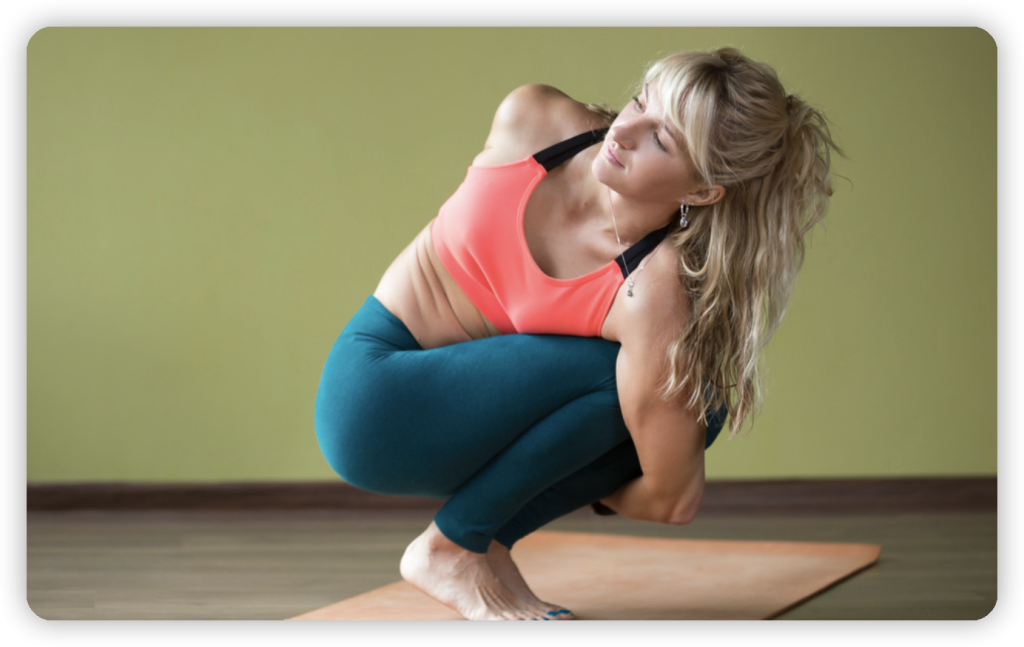
The Noose Pose involves a deep twist and a squat, offering multiple benefits but also requiring a degree of flexibility and strength. Here’s a concise step-by-step guide for The Noose Pose:
- Starting Position: Stand to the left of a wall, maintaining a distance of one arm’s length. Begin in the Mountain pose, feet hip-width apart, feeling grounded.
- Initial Rotation: Rotate your torso to the right, pressing your right hand against the wall. Bring your torso forward and release your arm.
- Enter Squat Position: Sink down into a full squat until your hips are near or on your heels. Stretch out your right arm to touch the wall for stability.
- Knee and Torso Movement: Shift your knees to the left. Exhale, rotate your torso to the right, and place both hands on the wall. Your left elbow should be outside your right knee.
- Deepen the Twist: Inhale and slide the back of your left arm down your left leg, aiming to get your left shoulder near your left knee. Exhale, pressing your shoulder into the knee to enhance the twist and stretch.
- Position the Hands: Release your right hand and let it hang by your side. Use your left hand for balance on the ground. When stable, reach both arms behind and clasp your left wrist with your right hand.
- Hold and Breathe: Stay in this pose for 30 to 60 seconds, maintaining steady breathing.
- Release and Return: Exhale and unclasp your hands, straightening your torso. Inhale and rise back into the Mountain pose.
- Repeat: Now, repeat the pose, this time twisting to the opposite side.
Benefits:
- Opens the shoulders and chest.
- Stretches the thighs, groin, and spine.
- Strengthens the ankles.
- Can alleviate symptoms related to digestion, asthma, and menstrual discomfort.
Cautions:
- Those with knee or back injuries, or a herniated disk, should avoid this pose or proceed with caution.
- As this is an intermediate pose, it’s essential to ensure proper alignment and awareness.
If you’re new to this pose, or if you have any health concerns, it’s beneficial to practice under the guidance of a certified yoga instructor. They can provide modifications or props to help make the pose more accessible.

